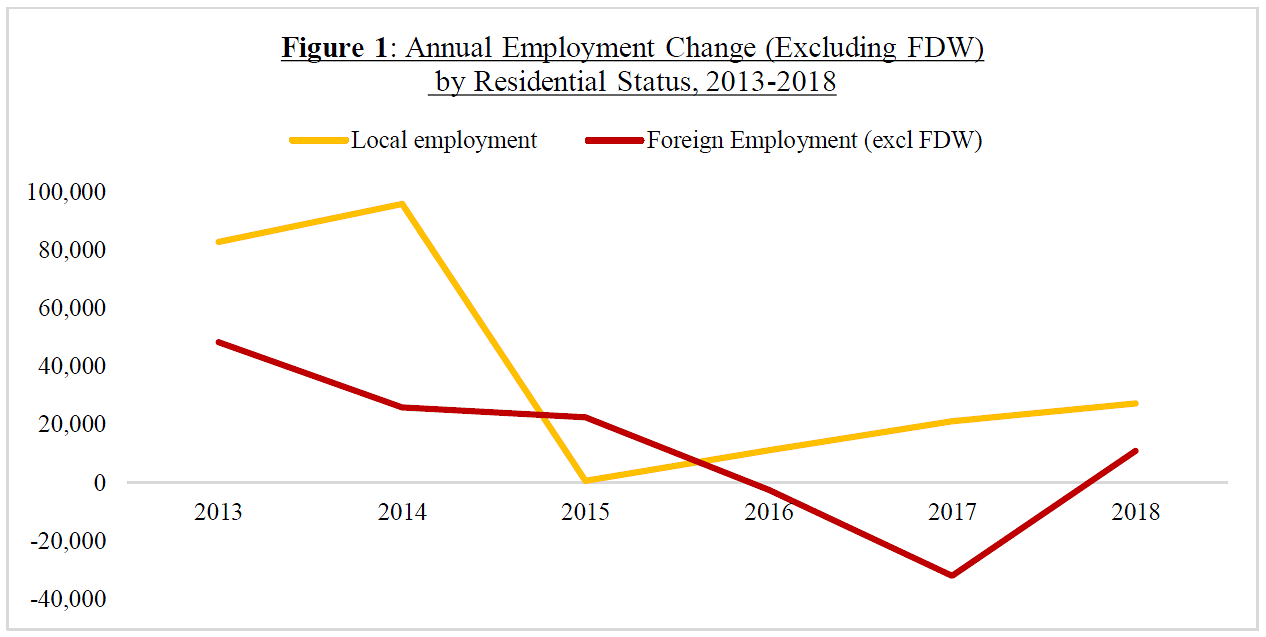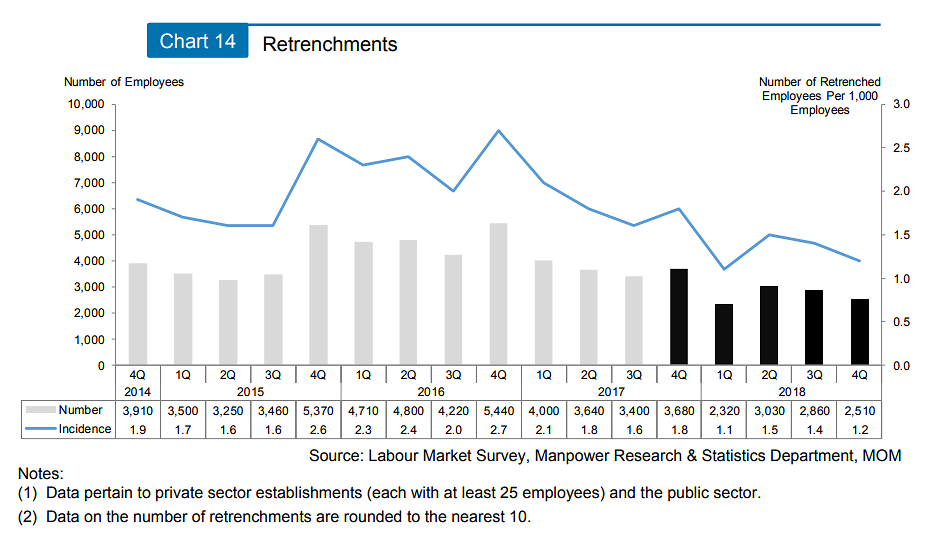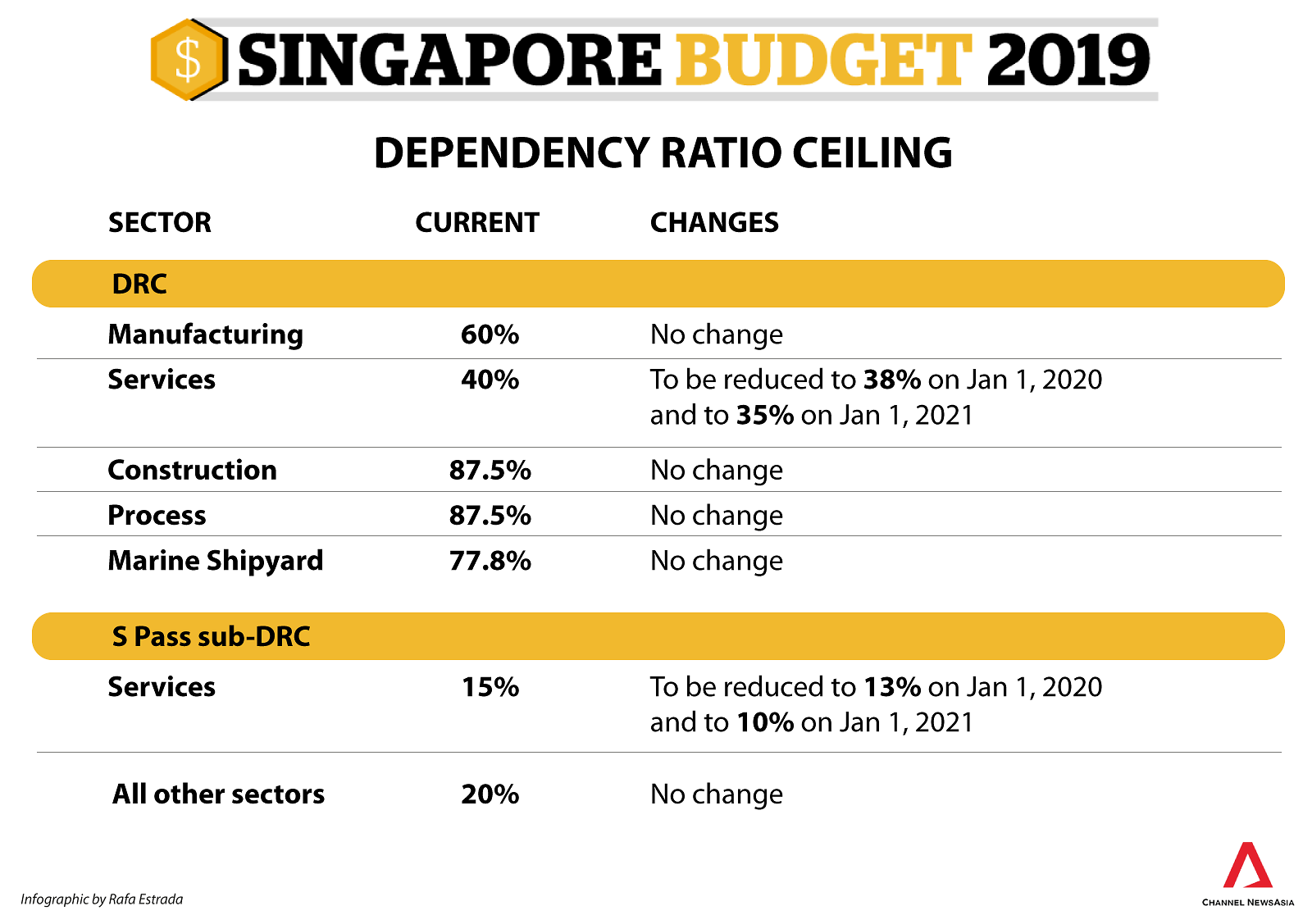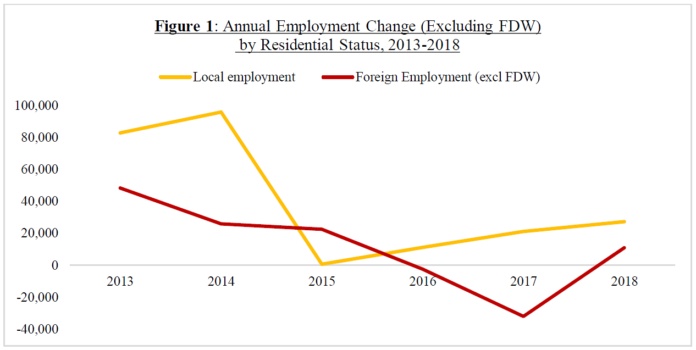SINGAPORE: The labour market improved in 2018, with local hires driving total employment growth for the year, according to a Ministry of Manpower (MOM) report released on Thursday (Mar 14), confirming preliminary estimates.
Annual average unemployment and long-term unemployment rates were lower than a year ago and retrenchments were significantly fewer.
However, labour market trends for the fourth quarter of the year were mixed, with total employment growing at a slower pace and unemployment and long-term unemployment rates in December slightly higher compared to a year ago.
In 2018, total employment – excluding foreign domestic workers – grew by 38,300, a reversal from the decline a year ago (-10,700).

(Image: Ministry of Manpower)
Employment growth among locals came in at 27,400, more than double that of foreigners. Local growth was boosted mainly by hiring in the community, social and personal services, transportation and storage, and financial and insurance services.
Foreign employment – excluding foreign domestic workers – grew by 10,900 last year, reversing a 32,000 decline in 2017.
This was due to stronger growth in the services sector and the moderating decline in the construction sector.
S Pass holders grew by 11,100 across all industries, driven by the services sector, with the highest growth seen in administrative and support, food, information and communications, professional and transportation and storage services.
However, Employment Pass (EP) holders continued to decline across all sectors in 2018, as a result of the raising of the EP qualifying salary in January 2017.
Over the last two years, the number of EP holders has declined by 6,400, according to MOM.
In 2018, the average unemployment rate was lower than the year before, although the overall unemployment rate came in higher at the end of the year. It rose from 2.1 per cent in September 2018 to 2.2 per cent in December 2018, after holding steady in the previous quarters.
As for retrenchments, these declined to 10,730 in 2018, significantly lower than the 14,720 retrenched in 2017. The decrease was seen across the manufacturing, construction and services sectors.
The number of people laid off in the fourth quarter of last year – at 2,510 – was also lower compared to the previous quarter as well as a year ago.
Similar to previous quarters, firms cited business restructuring and reorganisation as the top reasons for retrenchments in the fourth quarter.

(Image: MOM)
INCOMES HIGHER
Singaporean workers continued to earn higher incomes, said MOM, with the real median income – including employer CPF contributions – of full-time employed Singaporeans increasing by 3.6 per cent per annum from 2013 to 2018, higher than the 1.7 per cent per annum in the previous five years.
Over the last five years from 2013 to 2018, real income at the 20th percentile grew faster
(4.3 per cent per annum) than at the median (3.6 per cent per annum).
Local workforce growth is expected to remain modest in 2019, “due to the underlying demographics of an ageing population”, said MOM.
The Ministry of Trade and Industry projects that the Singapore economy will grow by 1.5 per cent to 3.5 per cent in 2019, with growth expected to come in slightly below the mid-point of the forecast range.
READ: Singapore economy slows to 3.2% growth in 2018
MOM also touched on the reduction of the Dependency Ratio Ceiling for the services sector announced in this year’s Budget.

“Reducing the Dependency Ratio Ceiling (DRC) and S Pass sub-DRC in the services sector from next year will help to keep the labour market tight to sustain the impetus for restructuring, and support good employment outcomes for Singaporeans,” said the ministry.





